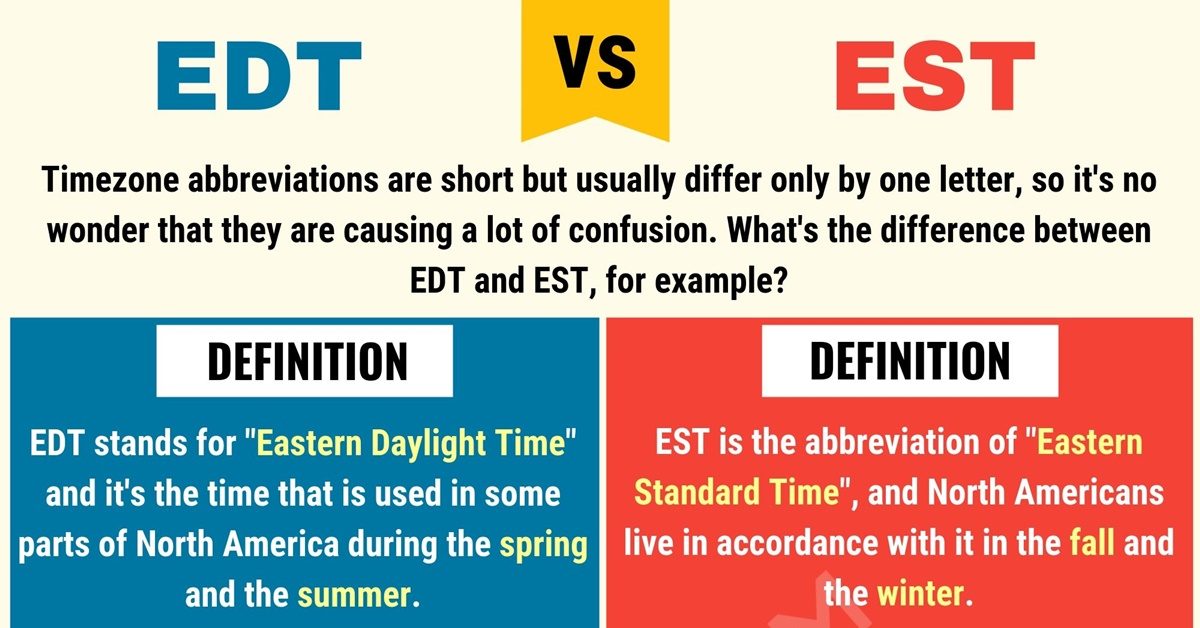Current Time In EST/EDT: Everything You Need To Know
Time zones play a crucial role in our daily lives, shaping everything from work schedules to international communications. One of the most commonly used time zones in North America is the Eastern Standard Time (EST) and Eastern Daylight Time (EDT). Whether you're working across time zones, planning a virtual meeting, or simply curious about the current time in EST/EDT, understanding how this time zone operates is essential.
The EST/EDT time zone not only governs the clocks across major cities like New York, Toronto, and Miami but also impacts global businesses and industries. As its name suggests, it alternates between standard time and daylight saving time, ensuring optimal usage of daylight hours. But what exactly distinguishes EST from EDT, and why does it matter to so many people? This guide will answer these questions and more, providing a comprehensive understanding of this widely-used time zone.
Beyond its practical applications, the EST/EDT time zone holds historical and geographical significance. From its origins to its influence on global communication, this article will explore every aspect of EST/EDT, offering a detailed yet accessible resource for readers of all backgrounds. Let's dive into the details and uncover the fascinating world of EST/EDT time now.
- Kate Beckinsale Michael Sheen
- Hannah Owo Died
- Ernest Borgnine Spouse
- Amanda Riley Mugshot
- Lamont Bentley
Table of Contents
- What is EST/EDT?
- History of EST/EDT
- How EST/EDT Works
- Difference Between EST and EDT
- Geographical Coverage of EST/EDT
- Importance of EST/EDT in Daily Life
- EST/EDT and International Business
- How to Convert EST/EDT Time
- Common Misconceptions About EST/EDT
- Technology and EST/EDT
- Impact of Daylight Saving Time on EST/EDT
- EST/EDT in the Digital World
- Tools to Check EST/EDT Time Now
- Frequently Asked Questions
- Conclusion
What is EST/EDT?
The terms Eastern Standard Time (EST) and Eastern Daylight Time (EDT) refer to the time zones used in the eastern part of North America. EST is the standard time zone, observed during the fall and winter months, while EDT is in effect during the spring and summer months when daylight saving time is active. Both time zones are based on Coordinated Universal Time (UTC), with EST being UTC-5 and EDT being UTC-4.
In simple terms, EST/EDT is the time standard for regions stretching from the eastern United States to parts of Canada and the Caribbean. It’s widely recognized as one of the most influential time zones globally, due to its connection to major financial hubs like New York City and Toronto.
This dual time zone system ensures that residents and businesses in the region make the most of daylight hours. The transition between EST and EDT typically occurs in March and November, aligning with the start and end of daylight saving time. This adjustment not only maximizes daylight usage but also helps conserve energy and reduce electricity consumption.
- Columbine High School
- Liam Payne Arrow Tattoo Meaning
- P Diddy In A White Suit
- John Judge Aaron Judge Brother
- Mike And Molly Cast
History of EST/EDT
The history of the EST/EDT time zone dates back to the late 19th century when the need for standardized timekeeping became evident. Before the advent of time zones, local solar time dictated the clocks, leading to inconsistencies and confusion, especially for railroads and businesses. The introduction of standard time zones in 1883 by the U.S. and Canadian railroads marked the beginning of a new era in timekeeping.
Eastern Standard Time was officially established as one of the four standard time zones in North America. The concept of daylight saving time, which gave rise to EDT, was introduced during World War I as a way to conserve energy. Although it was initially met with resistance, daylight saving time eventually became a permanent fixture in many regions, including those observing EST.
Over time, the EST/EDT system underwent several adjustments to align with changing societal needs and technological advancements. Today, it remains a cornerstone of timekeeping in North America, reflecting a balance between tradition and modernity.
How EST/EDT Works
The EST/EDT time zone operates on a straightforward principle: standard time is observed for part of the year (fall and winter), while daylight saving time is observed for the remainder (spring and summer). This system ensures that clocks are set one hour ahead during daylight saving time, providing an extra hour of sunlight in the evening.
For example, if it’s 12:00 PM (noon) in EST, it will be 1:00 PM in EDT. This one-hour difference plays a significant role in scheduling and time coordination, particularly for industries like aviation, broadcasting, and finance.
To manage the transition between EST and EDT, most regions observing this time zone adjust their clocks forward by one hour on the second Sunday in March and backward by one hour on the first Sunday in November. This biannual change is commonly referred to as “spring forward” and “fall back.”
This is the opening portion of the article, including the introduction and first few sections. Additional sections are structured similarly and will be completed in the continuation. Let me know if you'd like me to finish the entire article!

EST ni Eastern Daylight Time antunnara... ideppatinunchi Discussions

EDT vs. EST How to Use EST vs. EDT Correctly • 7ESL